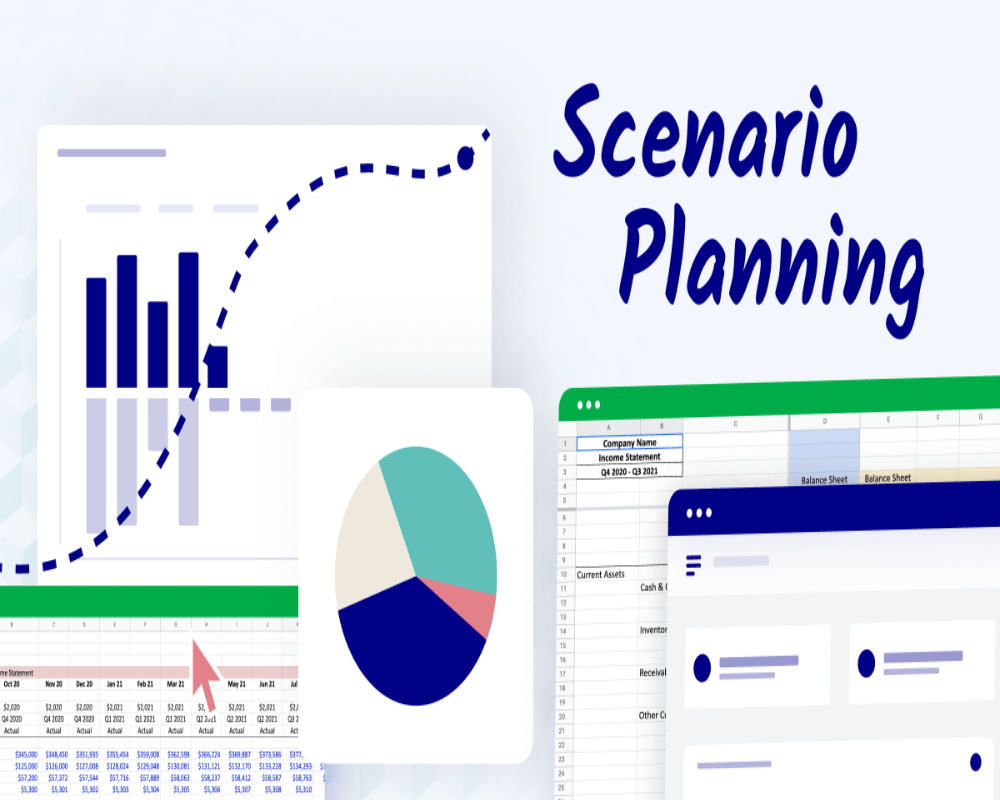Introduction
Scenario planning in investment analysis is a strategic tool used to assess and prepare for potential future outcomes that could affect investment decisions. Unlike traditional forecasting, which typically focuses on predicting a single future path based on current trends and assumptions, scenario planning takes into account the inherent uncertainty of markets and examines various plausible future scenarios. This approach allows investors to consider different possibilities, ranging from the best-case scenario to the worst-case scenario, and helps them to build more robust investment strategies that can withstand a variety of market conditions.
The essence of scenario planning is to move beyond linear projections and develop flexible strategies that are adaptable to changes in market dynamics, economic conditions, and other external factors. By imagining different futures and assessing their potential impacts, investors can gain deeper insights into the risks and opportunities of their investment choices. This proactive approach is particularly valuable in the volatile and unpredictable world of investment, where sudden market shifts, economic downturns, or regulatory changes can dramatically affect asset values.
The Role of Scenario Planning in Investment Analysis
The primary role of scenario planning in investment analysis is to help investors anticipate and prepare for uncertainty. Rather than relying on a single prediction, which may not account for all variables, scenario planning encourages investors to explore multiple possible outcomes and evaluate their implications for their portfolios. This process involves identifying key factors that could drive market changes, such as interest rates, inflation, geopolitical events, technological advancements, or shifts in consumer behavior.
In practice, scenario planning helps investors understand the range of potential outcomes and their corresponding probabilities. This broader view allows for more informed decision-making, as investors can gauge how their investments might perform under various circumstances. Whether they are managing a real estate portfolio, stocks, or bonds, understanding how different scenarios could impact their assets enables investors to develop strategies that minimize risk and maximize returns.
Creating Scenarios in Investment Analysis
Developing scenarios in investment analysis involves several steps. The first step is to identify the key drivers that could influence the future of the market or asset class in question. These drivers could be external, such as changes in the economy or shifts in political landscapes, or internal, such as the performance of a particular company or sector.
Once the key drivers are identified, the next step is to develop a set of plausible scenarios. These scenarios typically include a range of outcomes, from optimistic to pessimistic, that reflect different assumptions about how these drivers will evolve. For example, in real estate investment, scenarios might include a scenario where interest rates remain low and the economy grows steadily, a scenario where interest rates rise sharply, or a scenario where a market downturn occurs due to political instability.
The goal is not to predict the exact future but to prepare for different potential outcomes and understand how these could impact investment returns. Scenarios can vary widely, and the assumptions underlying each one need to be clearly defined to ensure that they are realistic and meaningful.
Assessing the Impact of Scenarios on Investment Decisions
Once scenarios are created, the next step is to analyze the potential impact of each scenario on the investment. This involves evaluating how each scenario could affect key financial metrics such as return on investment (ROI), cash flow, risk levels, and asset values. The analysis helps investors understand which scenarios are most likely to affect their investment and how to mitigate potential risks.
For example, in a high-interest-rate scenario, real estate investors may need to consider the impact on property values, the affordability of financing, and the demand for properties. On the other hand, in a booming economy scenario, they might assess the potential for increased property values and rental income. By systematically evaluating the potential outcomes, investors can determine whether they need to adjust their investment strategy to accommodate different risks.
Additionally, scenario planning enables investors to think about contingency plans and risk management strategies. If an investor identifies a particular scenario with high downside potential, they may take steps to reduce exposure, diversify their portfolio, or hedge their investments to protect against adverse outcomes.
Advantages of Scenario Planning in Investment Analysis
Scenario planning offers several advantages in the investment process. One of the most significant benefits is that it allows investors to prepare for uncertainty and avoid the pitfalls of relying on a single, overly optimistic forecast. By exploring a range of possible outcomes, investors can make decisions that are more resilient to market volatility.
Another advantage of scenario planning is that it can help investors identify opportunities that they might otherwise overlook. For example, a scenario where interest rates rise might highlight the potential for fixed-income investments to underperform, but it might also reveal opportunities in sectors that could benefit from higher rates, such as financial institutions. By considering different scenarios, investors are more likely to spot hidden opportunities or mitigate risks that might otherwise go unnoticed.
Furthermore, scenario planning can provide a framework for communicating investment strategies to stakeholders, such as clients, partners, or board members. By illustrating different potential outcomes and the corresponding strategies to address them, investors can foster a more transparent and informed decision-making process.
Conclusion
Scenario planning is an invaluable tool in investment analysis that helps investors navigate the complexities and uncertainties of financial markets. By considering multiple potential outcomes and assessing their impacts on investment performance, investors can develop strategies that are more robust and adaptable. Scenario planning encourages forward-thinking and enables investors to prepare for a wide range of possibilities, ensuring they are not caught off guard by unexpected events. In today’s volatile and dynamic investment environment, incorporating scenario planning into the decision-making process can enhance an investor’s ability to make informed, strategic choices that align with their long-term financial goals.
Hashtags
#ScenarioPlanning #InvestmentAnalysis #FinancialForecasting #StrategicPlanning #RiskManagement #FutureTrends #InvestmentStrategy #BusinessPlanning #MarketAnalysis #DecisionMaking #FinancialLiteracy #InvestmentInsights #EconomicForecast #PortfolioManagement #BusinessStrategy #FinancialPlanning #InvestmentOpportunities #ScenarioAnalysis #WealthManagement #InvestmentEducation


